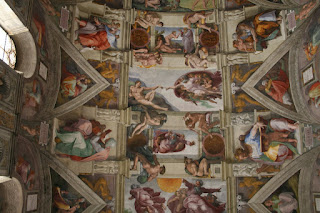Corfe Castle & the beach
It was a beautiful spring day. There was no soccer to go to so we looked in the National Trust book.
There was castle ruins that I wanted to see but wanted to find something nearby that everyone would like...but first the castle

Corfe Castle is in Dorset on the edge of the Isle of Purbeck. The castle sits in a gap of the chalk mountains that separate the Isle from the rest of England. In fact, the word "Corfe" is Saxon for gap. The castle dates back to the 11th century and has a very turbulent history. It was a royalist stronghold during the Civil War of the 1600s. When the castle was finally captured by the Parlementarians it was blown up.
After leaving the castle and the village of the same name(!) we drove a few miles down the road to a National Trust Beach, Studland Beach. The beach stretches for 3 miles along the edge of what is called the Jurassic Coast, a section of coast line that dates back over 100 million years and more.

We sat on the beach and enjoyed the sun. The temperature was in the high 60s with only a bit of wind. I looked, as usual, for sea shells while the kids dug in the sand. We brought a picnic lunch and ate it right there on the beach. Right next to the beach was a section of iron rocks where, when parts eroded, were left iron tubes and other interesting shapes. We made our way back home after a great day out only to discover that we left some books there...so I drove back the next Sunday.






























